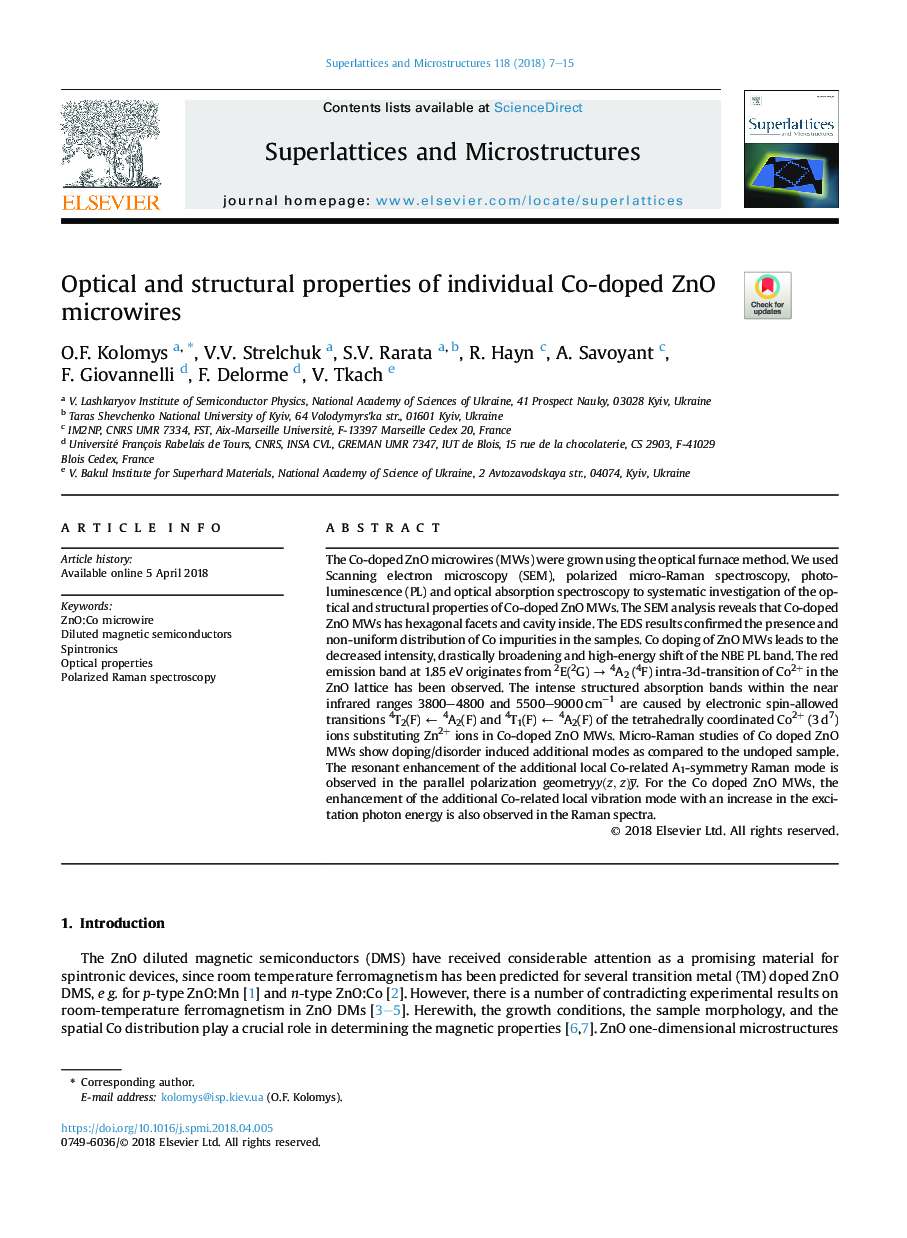| Article ID | Journal | Published Year | Pages | File Type |
|---|---|---|---|---|
| 7938604 | Superlattices and Microstructures | 2018 | 9 Pages |
Abstract
The Co-doped ZnO microwires (MWs) were grown using the optical furnace method. We used Scanning electron microscopy (SEM), polarized micro-Raman spectroscopy, photoluminescence (PL) and optical absorption spectroscopy to systematic investigation of the optical and structural properties of Co-doped ZnO MWs. The SEM analysis reveals that Co-doped ZnO MWs has hexagonal facets and cavity inside. The EDS results confirmed the presence and non-uniform distribution of Co impurities in the samples. Co doping of ZnO MWs leads to the decreased intensity, drastically broadening and high-energy shift of the NBE PL band. The red emission band at 1.85â¯eV originates from 2E(2G) â 4A2 (4F) intra-3d-transition of Co2+ in the ZnO lattice has been observed. The intense structured absorption bands within the near infrared ranges 3800-4800 and 5500-9000â¯cmâ1 are caused by electronic spin-allowed transitions 4T2(F) â 4A2(F) and 4T1(F) â 4A2(F) of the tetrahedrally coordinated Co2+ (3â¯d7) ions substituting Zn2+ ions in Co-doped ZnO MWs. Micro-Raman studies of Co doped ZnO MWs show doping/disorder induced additional modes as compared to the undoped sample. The resonant enhancement of the additional local Co-related A1-symmetry Raman mode is observed in the parallel polarization geometryy(z,z)y¯. For the Co doped ZnO MWs, the enhancement of the additional Co-related local vibration mode with an increase in the excitation photon energy is also observed in the Raman spectra.
Related Topics
Physical Sciences and Engineering
Materials Science
Electronic, Optical and Magnetic Materials
Authors
O.F. Kolomys, V.V. Strelchuk, S.V. Rarata, R. Hayn, A. Savoyant, F. Giovannelli, F. Delorme, V. Tkach,
